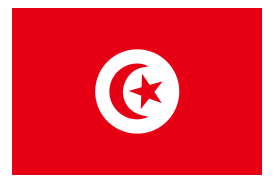Language/Tunisian-arabic/Culture/Traditional-Crafts-and-Skills
As a Tunisian Arabic language teacher, I have been teaching Tunisian Arabic for 20 years and I am dedicated to preserving and sharing the traditional skills and crafts of Tunisia that have been passed down for generations. In this lesson, we will explore some of the most popular traditional crafts and skills in Tunisian culture.
Traditional Crafts and Skills in Tunisia
One of the most famous traditional crafts in Tunisia is carpet weaving. Tunisian carpets are known for their intricate designs and vibrant colors. They are very popular among tourists who travel to Tunisia. Tunisian carpet weaving has been passed down for generations and it is considered as an important cultural symbol. Some Tunisian women still weave carpets by hand using traditional techniques.
Tunisian Carpet Weaving
Tunisian carpet weaving has been recognized by UNESCO as part of the world's intangible cultural heritage. The process of making a Tunisian carpet is very elaborate and it usually takes months to complete. Tunisian carpets are made with wool, silk, or a combination of both. They are characterized by their geometric designs and bright colors. The most famous carpets come from the cities of Kairouan and Mahdia.
Here is a table with some Tunisian carpet-related vocabulary:
| Tunisian Arabic | Pronunciation | English |
|---|---|---|
| خباطيل | khbathil | carpets |
| ملحفة | mla'fa | coverlet |
| نسج | weave | |
| دقة | hammering |
Pottery
Pottery is also a very popular traditional craft in Tunisia. Tunisian pottery has a long history, dating back to the Phoenician era. It is known for its bright colors and intricate designs. The pottery is usually made with red clay and decorated with white, green, and black geometric patterns. The most famous pottery center in Tunisia is the town of Nabeul.
Here is a table with some Tunisian pottery-related vocabulary:
| Tunisian Arabic | Pronunciation | English |
|---|---|---|
| طين | tyn | clay |
| فخار | fkharr | pottery |
| أواني | 'uwanii | pots |
| صينية | plate |
Embroidery
Tunisian embroidery is another traditional craft passed down through generations of Tunisian women. The embroidery is usually made with silk or cotton thread on a linen or cotton fabric. Tunisian embroidery is characterized by its colorful designs and intricate details. The embroidery is used to decorate traditional garments such as the burnous, a long cloak-like garment, and the karakou, a traditional wedding dress.
Here is a table with some Tunisian embroidery-related vocabulary:
| Tunisian Arabic | Pronunciation | English |
|---|---|---|
| تطريز | tatriz | embroidery |
| إبرة | 'ibriya | needle |
| ثوب | thoub | dress |
| قفطان | qafthan | kaftan |
Conclusion
These traditional crafts and skills have been a part of Tunisian culture for centuries and have been passed down from generation to generation. Tunisian craftswomen and craftsmen have honed their skills to perfection over time, creating beautiful pieces of art that symbolize Tunisian identity and culture. As you learn Tunisian Arabic, it is important to understand and appreciate these cultural traditions, as they are an integral part of the Tunisian way of life.

